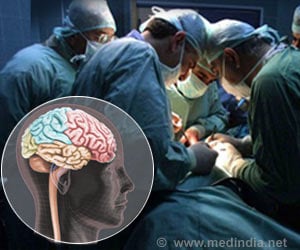- Radiation therapy is often used in breast cancer patients to eradicate residual cancer
- Radiotherapy causes a number of undesirable side effects to the skin
- New LED based imaging device is able to measure and monitor skin toxicity during treatment
Reason for Study
The research team feels that if skin damage can be accurately measured and the potential severity of toxicity in patients accurately predicted, it could help in better optimizing radiation treatment.Methods of the Study
When light from the LED device is shined on the breast tissue, some amount of light will be absorbed and the rest scattered. The tool basically measures the light absorbing and scattering properties of the skin.The team used different LED devices to test the effects of eight different wavelengths of light and their effects on the skin. They were able to accurately quantify the state of the skin’s health.
To measure the skin health accurately, an imaging technique called Spatial Frequency Domain Imaging, or SFDI was employed which imparted distinctly recognizable patterns on an in-built digital micro-mirror device within the LED imager.
"Since we use several wavelengths of light, we perform spectroscopy and obtain the content of melanin, tissue hemoglobin, in the de-oxygenated and oxygenated state, from which we can calculate the total blood volume and oxygen saturation in the tissue," said Anaïs Leproux, a post-doctoral researcher at BLI and lead author of the paper. "We measure superficially, about three to five millimeters deep."
Special Features of the LED Device
This technique is non-invasive and being able just a few millimeters thickness of skin can reveal a lot about the radiation induced changes. Additionally, employing a projector technology, helps view and measure over huge areas (about 20 cm by 20 cm) without scanning."We're hoping that we can see skin thickening in the scattering parameters we're looking at," she said. "We think that the radiation induces a remodeling of the collagen in the skin, which should be seen as a change in the scattering parameter."
Radiation Induced Skin Damage
Radiation can cause physical damage to the skin and prolonged exposure is known to cause certain cancers such as skin cancers.The most commonly observed toxicities of radiation exposure include irritation, and sometimes blistering and peeling. Patients can also develop permanent discoloration of the skin and marked thickening and fibrosis which is often a delayed side effect.
Future Research Plans
In future, the research team hopes to- Improve upon the modeling of the LED device making it smaller
- Decrease measurement times still further
- Make the technology cheaper
- Develop better lotions and applications relevant to the damage
References:
- Rhonda M. Brand et al. A Topical Mitochondria-Targeted Redox Cycling Nitroxide Mitigates Oxidative Stress Induced Skin Damage, Journal of Investigative Dermatology (2016).DOI: 10.1016/j.jid.2016.09.033
















